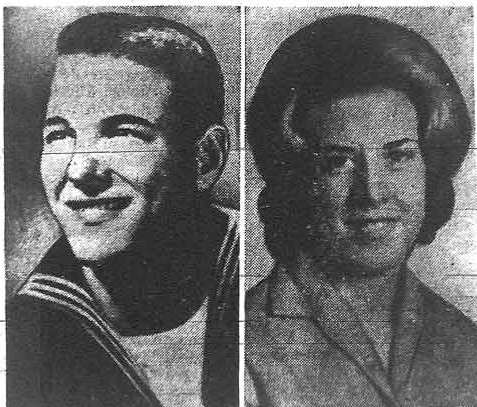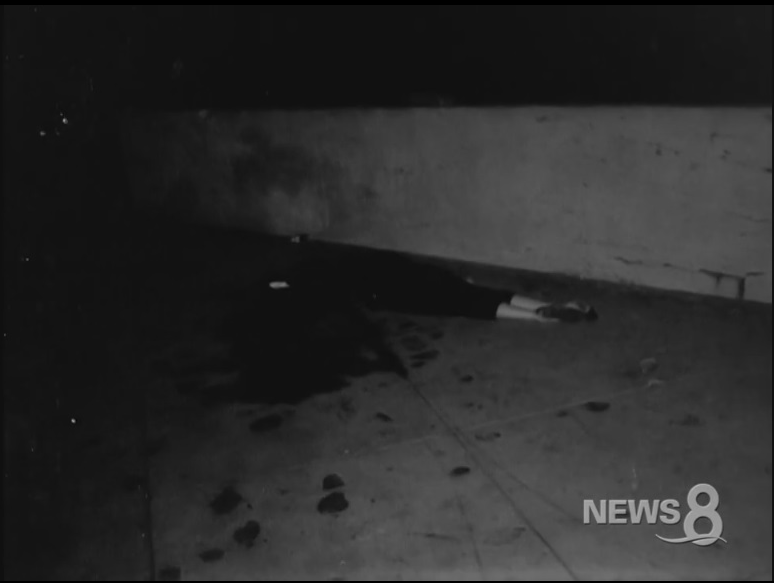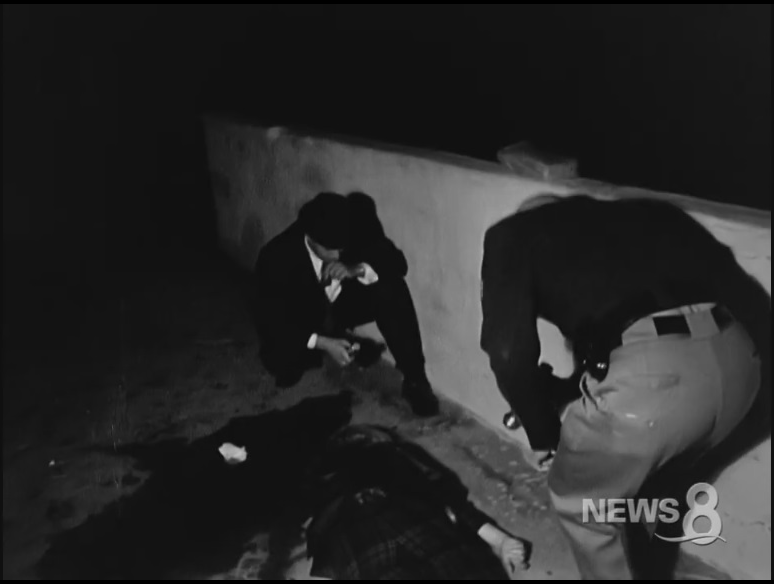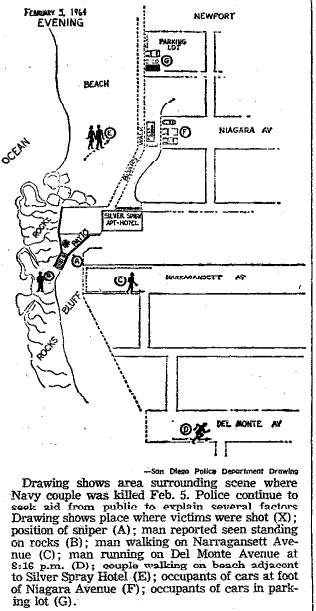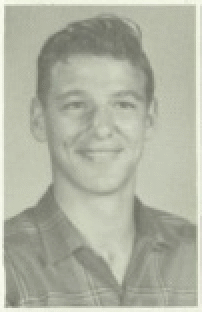|
In the late 1960s a serial killer quickly and clumsily ____________________________________________________________ |
|
|
|
They are sometimes called the “Honeymoon Murders” and their perpetrator “The Sniper Slayer.” The double murder of newlyweds Johnny Ray Swindle and Joyce (Key) Swindle on February 5, 1964, was a brutal and clumsy crime little written about until recently. Even during the glut of interest in the Zodiac case, the Swindles’ murder remained largely obscure and undeveloped in relation to the Bay Area’s “Boastful Slayer.” Why? Well, there’s no reason to second-guess too much. Having spent 6 formative years in San Diego in the 1980s I know how protective America’s Finest City is of its reputation. SFPD isn’t the type to draw a connection without evidence. This had been a longstanding attitude and no doubt went back to the ’60s. Today, things may be more lax, but we are not talking about today’s attitude. In any case, now in the 2020s we are free to consider the details of the crime and the probabilities that arise therefrom to see if it does or does not forge a link to The Zodiac Killer. As with the other Bay Area cases, it is not Zodiac’s often hollow boasts that he killed before, especially in So. Cal., that prompt anyone pursuing his trail to examine previous murders in So. Cal. The double murders of Faraday/Jensen on December 20, 1968, suggested a skilled killer. There are two sets of couples killings in So. Cal in the early 1960s. And each matches a variation of the Zodiac’s M.O. There is strategy and logistics in everything in life. The great military maxim rings true for all: “Strategy is easy; logistics is difficult.” No one just says in their mind ‘I’m going to go pop off a couple,’ and bob’s your uncle it comes about neatly. The mark of a beginner, as it applies to anything resembling Zodiac’s M.O. in the 1960s, is actually seen in the murder of cabbie Ray Davis on April 11/12, 1962, in Oceanside. Here the killer misfired his .22 automatic after the kick of the first shot, sending a stray bullet high through the windshield. In this case, the killer also forewarned cops he was intentionally going to kill just to baffle them and terrorize the public. One year and two months later on June 4, 1963, a killer with a .22 automatic viciously guns down Robert Domingos and Linda Faye Edwards at a remote petting spot along Highway 101 near Lompoc. It is clumsy again. Eight months later, February 5, 1964, back down along the coast in San Diego another couple, the subjects of this article, were gunned down at night by a killer with a .22 automatic. The taunting phone caller/killer of Ray Davis implied he was itinerant: ‘I’m going to pull a baffling crime here in Oceanside.’ The overall pattern suggests these murders by .22 caliber between 1962 and 1964 were those of a traveling coastal killer. It is the night of Wednesday February 5, 1964. There is a constant whoosh in the ears from the sizzle of the nearby sea and its breakers. Like all beach sections of San Diego, Ocean Beach is crowded but quiet and laid back, especially around 8:30 p.m. Old streets cross each other in a grid, crowded with bungalows, apartments, small houses, motels, and small shops, and all end at the beach. Here there is a feeling of The boardwalk along the beach eventually wends around nearby cliffs. Here the boom and roll of the surf echoes up from the cement retaining wall of the boardwalk, up the cliffs to Narragansett Avenue. Ice plant covers the slope all the way to the dark silhouettes of apartments and homes capping the hilltop. Between them there is the silhouette of a wood balustrade and the back of a traffic sign marking the dead end of the street. By the wood balustrade a flight of cement stairs leads down the hillside to the tide pools, the “patio” and the boardwalk. Against the seawall of the “patio” a loving couple snuggles. The young man wears his Navy jumper, the blonde girl a leather jacket and plaid capris. On the seawall by them is a Whitman’s candy box— an early Valentine gift for his Fifty feet up the hilltop behind them stands a man by the wooden balustrade marking the dead end of Narragansett. The concrete stairway leads down before him, but he does not take it. He steps along a cyclone fence protecting a patio area. He is now at the edge. He looks down. He watches the couple. Then he descends part way. He watches the couple cuddle below again. No one can see him from Narragansett now. Over his right shoulder in the distance the streetlamps of Ocean Beach are dull pearls in the night’s hazy moisture, strung out in crisscrossing lines. He raises a pistol in both hands and aims. The roar of the surf is his ally. There is no sound of death issuing forth. The Navy man’s head burns. The girl he cuddles collapses against him, her left upper back burning as well. Then her left arm. Then his left thigh went tight The figure atop the slope strides down and stands over them. She is lying face down, face somewhat to the right. He fires a round into the right back of her head. The Navy man is on his left side, next to the wall, just under the candy box. The killer stands over him now and puts a bullet through his head near his left ear. He walks away. Ed Nelson is walking to the beach. The time is about 8:35 p.m. He sees the figures. Shadows in the dark, he thought they had been drinking and passed out. He approached with his flashlight shining on them and then saw, in the cold round beam of his flashlight, a pool of blood extending from them. The man was moaning inarticulacy. Ed Nelson rushed to an apartment to get the police. Neighbors came out of their apartments and bungalows. Some went down to look. The girl didn’t didn’t move, but the man was gasping. Police and ambulance arrive. The man is rushed to the hospital where he dies a few hours later. The woman had died already on scene. A thorough San Diego police investigation quickly uncovered the area had been as busy as Piccadilly between 8 and 8:30 p.m. A couple had been CBS Channel 8 did an admirable job covering the case then and locating archival footage later in 2020. One of these witnesses was Mrs. West. Reporter: “Mrs. West, when you went to the scene of the shooting, what was the situation? Detective Lieutenant Schenck describes: Reporter: “Lt. Schenck, where were the couple standing when they were shot?” The area was not well lit. The killer was obviously a good shot with good nighttime vision. He obviously went for the head first on Johnny Ray and the heart on Joyce. He could have left it at that. But he came all the way down and stood over them. All the witnesses who had come close to the bodies reported seeing the 2 shell casings lying in the pool of blood. The Coroner describes the scene (in Joyce Swindle’s autopsy report) upon arrival: “A pool of blood, approximately 7 feet long by 1 foot wide, was noted on the cement, beginning at the point of the decedent’s head. Two .22 shells are noted in the blood approximately 2 feet from the top of the decedent’s head.” Scouring the area, the police had quickly found the 5 shining brass shells where the killer had stood by the staircase on the hilltop. Despite many people being about the area at 8:30 p.m. that night, no one heard any gunshots except Mrs. Marci Shields. And despite Lt. Schenck’s caution about the 2 spent casings by Joyce’s head indicating the killer coldly stood over and shot them again, homicide detectives came to the conclusion that he had indeed done so. Reporter: “Mrs. Shields in your apartment a block and a half away from the murder scene, what did you hear last night?” The newspapers declared these shots to be the “coup de grace.” Twenty five detectives swarmed the area looking for the weapon— the police assuming the killer must have ditched it somewhere in order to walk away and look casual. Navy divers combed the sea bottom of the nearby shore. Other detectives went door-to-door asking the neighbors to voluntarily surrender their .22 weapons for testing. About 40 weapons were tested. None matched. Detectives scoured the rooftops from a helicopter to see if the killer had thrown the weapon upon one. Although the police asked publicly for some of the unknown witnesses to come forward, it seems a few didn’t. In addition, a Pontiac and a Jaguar XKE The San Diego PD detectives came to the conclusion that a “psychopathic killer” was responsible. There simply was no motive but murder. Johnny Ray Swindle and his new wife Joyce had been childhood sweethearts in Jasper, Alabama. During furlough on January 18 he went The above are the basics of the case. But there are a few problems with the facts. The first thing hard to believe is that Mrs. Marci Shields is the only one who heard the gunshots. According to the newspapers she actually lived over 4 blocks away, in the alley of Santa Monica Avenue. Thus there is the problem with who exactly screamed “No, no!” Was this a witness who had come along and saw the coup de grace? He then fled? From the autopsy reports, Johnny Ray could hardly have screamed “No, no!” He had two bullet holes in his head. But a witness shrieking at seeing the final scene? However, considering the distance between Marci Shields’ house and the crime scene, the “No, no!” was likely coincidental and closer-at-hand. Time estimations don’t entirely mesh, but that is common in witness recollections. The man running on Del Monte was thought to be around 8:16 p.m. Mrs. Shields thought it was “about” 8:30 p.m. when she heard the gunshots. But “about” is an incredibly elastic word in English. Some detectives placed time of attack at 8:15 p.m. Since there was no logical motive here, it wasn’t long before Santa Barbara Co. sheriff detectives arrived. There was immediate suspicion that the killer of Domingos and Edwards was responsible here. However, ballistics didn’t match— it was not the same .22 automatic that had gunned down Bobby and Linda. But it was the same type of gun. As with the Ray Davis case, a Marine became a suspect. Michael Lee Gambrill was on liberty from his base at this time and then went AWOL and got back to Illinois where he hacked his entire family up with an ax. He was later caught in Florida. In his possession was a .22 caliber pistol. He admitted to the ax murders, but not the murders of the Swindles. He took this pistol after he murdered his father in Illinois (Feb 28, 1964). He did not have it with him in San Diego. Ballistics could not tie his .22 to the murder weapon. What really is known here for certain? The SFPD came to accept the 7 shell casings and nothing else as the only evidence. They didn’t even have Having the advantage of 60 years of time and several more murders of California cooing couples, can we make more of it today? By Induction we can, but we must admit the only evidence remains 7 shell casings. The connections are obvious but not concrete, for within the connections there is contradiction. For a number of examples: The Ray Davis killer also delivered coup de grace to the head pointblank. The San Diego and Gaviota areas were known petting spots. However, the Domingos/Edwards killer tried to cover up his murders by burning the bodies. The most intriguing connection is to the Faraday/Jensen murders, the first one Zodiac takes credit for. The Zodiac was an excellent night shooter who first used a .22 automatic pistol. Zodiac was a utilitarian but not necessarily efficient killer. Similar to Johnny Ray’s killer, the Zodiac left Faraday and Mageau to linger. Because Mageau called out, he calmly returned to shoot Ferrin and Mageau to make sure. However, for me, the Swindle murders do seem like those of a demented military punk. One can see why Gambrill, for instance, attracted attention for more than his family’s ax murders. He was out and about and alone that night, on liberty from 7:30 p.m. to 10:30 p.m. from the nearby Marine Corps Recruiting Depot. Although he reported back to base, he seemed to have wanted out of the country. He went AWOL on Feb 25 and returned to Illinois. His excuse for killing his family: his Michael Gambrill, 1963 High School photo; his caption: “Such as he are always needed.” Back then the legal system was all about reform, not punishment. They really believed in all that rubbish in Anatomy of a Murder (1959). There were legal maneuvers to get him declared insane. Though he had confessed to killing his family, he pled innocent. Being found guilty for 3 murders would put him away for ever. Instead a plea deal got him to confess only to his sister’s murder. There was no trial now. He was summarily given a reduced sentence. He was out in 40 years. When questioned by Decatur Police regarding the Swindles’ murders, Gambrill couldn’t remember what he was doing on liberty the night of February 5. SFPD couldn’t pursue it. They had 7 shell casings. Nothing more. Where the gun came from and where it went, they didn’t know. All they knew is he went AWOL and wanted out of the country. |

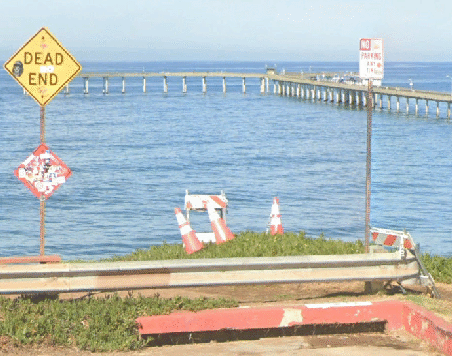
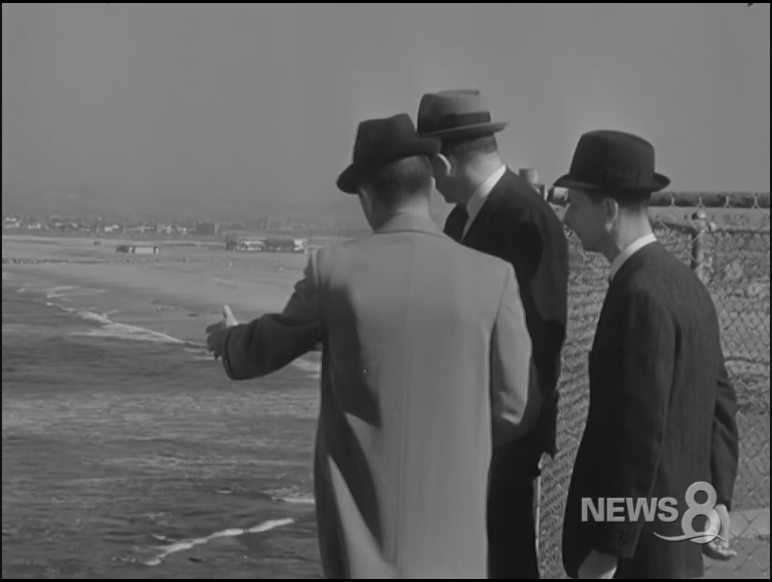
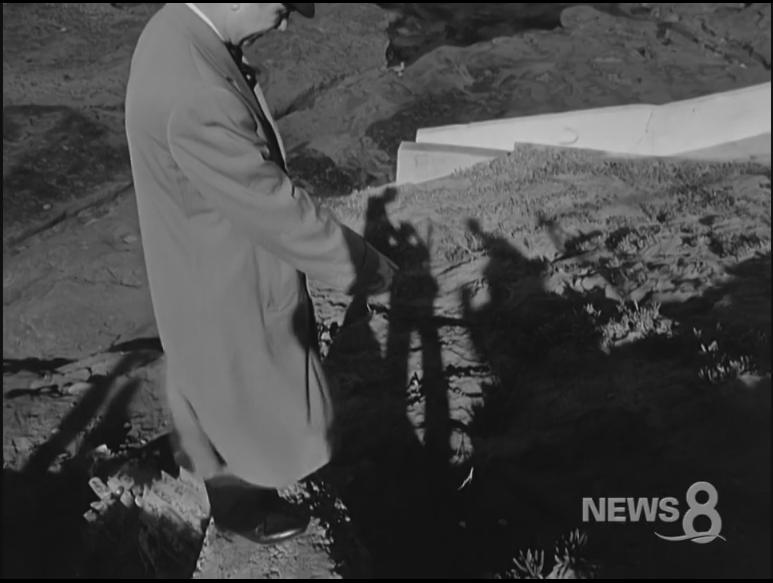
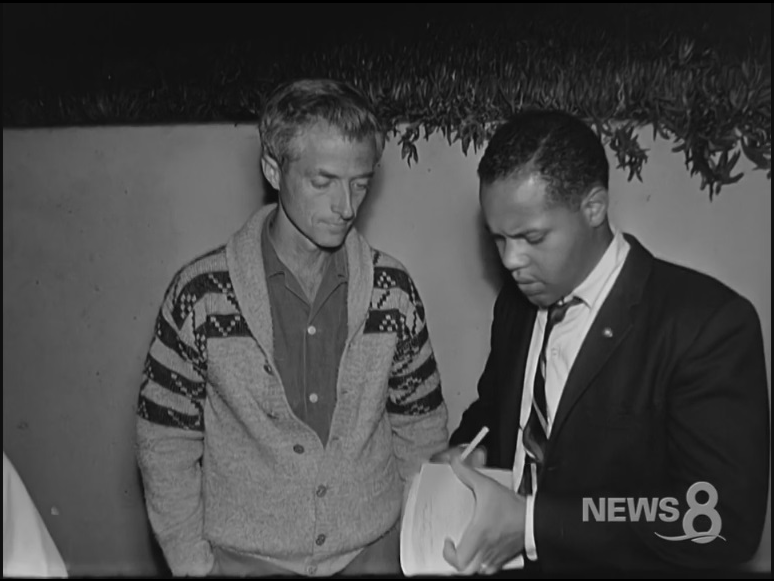
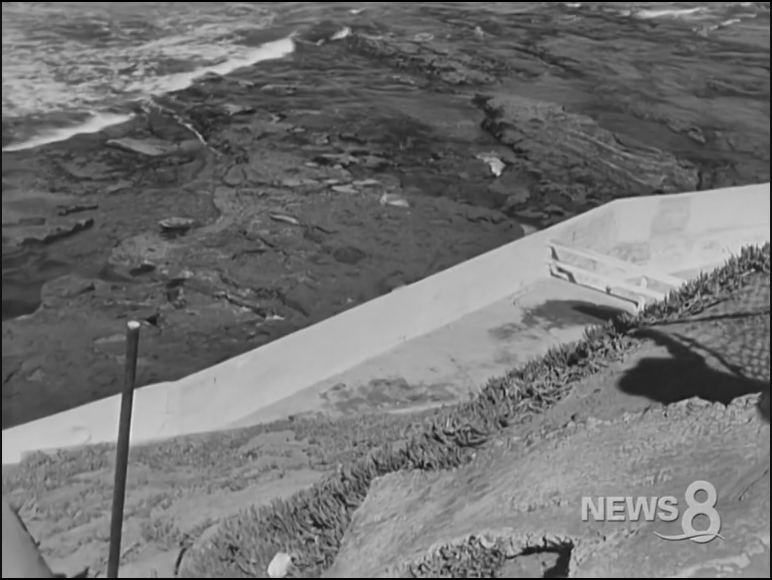
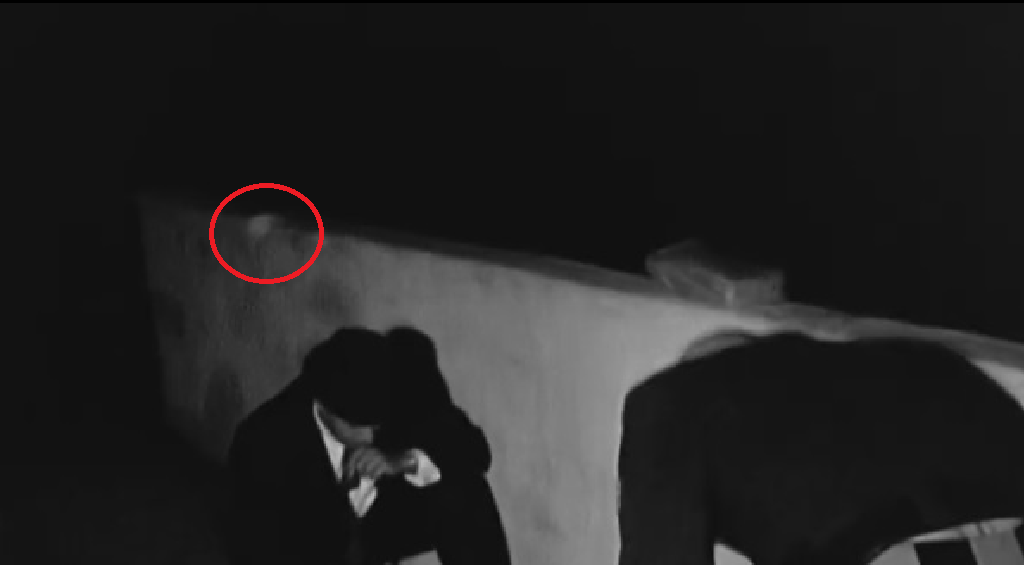
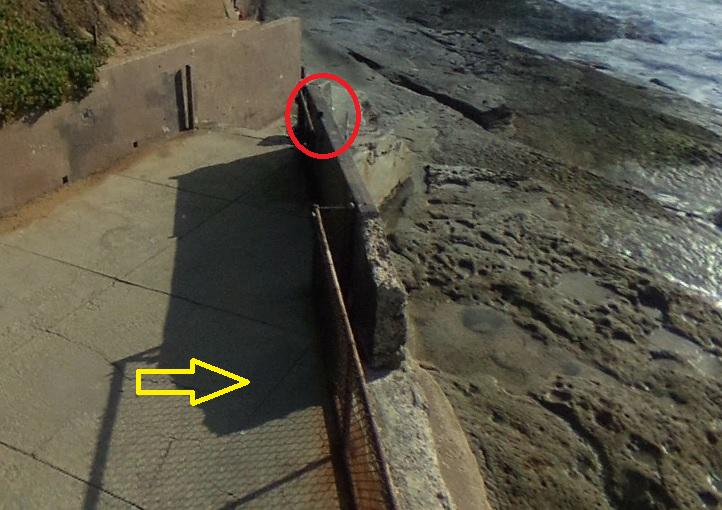
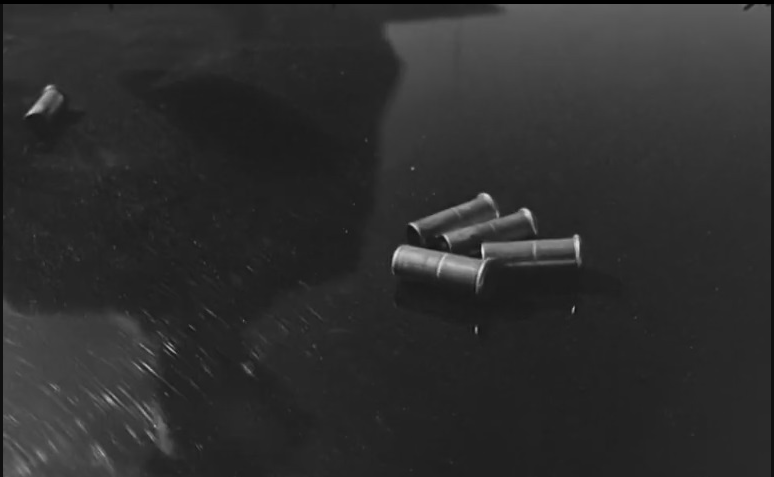 footprints because people came and trampled over the ice plant area before the police had arrived.
footprints because people came and trampled over the ice plant area before the police had arrived. 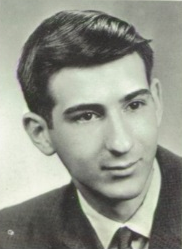 father wouldn’t help him get out of the Marines and back to Ireland where he was born. He didn’t understand why he killed his family. He suddenly had the urge, he said. He didn’t understand it at all. He only got excited from “bongo music” (beach type music with bongo drums) and he hadn’t been listening to any before he killed them, he said. He didn’t show remorse.
father wouldn’t help him get out of the Marines and back to Ireland where he was born. He didn’t understand why he killed his family. He suddenly had the urge, he said. He didn’t understand it at all. He only got excited from “bongo music” (beach type music with bongo drums) and he hadn’t been listening to any before he killed them, he said. He didn’t show remorse.